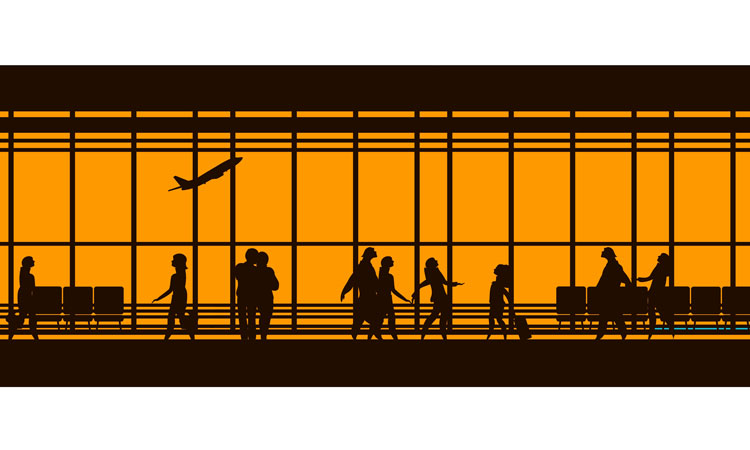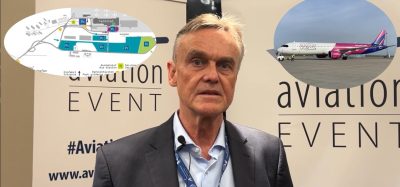The exponential increase of passenger numbers poses problems for aviation
Posted: 26 October 2018 | International Airport Review | No comments yet
IATA has revealed that present trends in air transport suggest passenger numbers could double to 8.2 billion in 2037 which poses significant challenges for the aviation industry.


The latest update to IATA’s 20-Year Air Passenger Forecast, shows that an increasing shift Eastwards in the centre of gravity of the industry is behind the continued strong growth. Over the next two decades, the forecast anticipates of nearly four per cent compound annual growth rate (CAGR), leading to a doubling in passenger numbers from today’s levels.
The association warned, however, that growth prospects for air transport, and the economic benefits driven by aviation, could be curtailed if protectionist measures are implemented by governments.
Alexandre de Juniac, IATA’s Director General and CEO said: “Aviation is growing, and that is generating huge benefits for the world. A doubling of air passengers in the next 20 years could support 100 million jobs globally. There are two important things that stand out about this year’s forecast. Firstly, we are seeing a geographical reshuffling of world air traffic to the East. And secondly, we foresee a significant negative impact on the growth and benefits of aviation if tough and restrictive protectionist measures are implemented.”
Join us live: Shaping the Next Generation of Hold Baggage and Air Cargo Screening
Join us live for an insightful webinar on 11th December at 14:00 GMT, in collaboration with Smiths Detection, as we explore the strategic balance of operational efficiency, regulatory compliance, and sustainability in high-volume security environments.
This session offers a focused look into future-proofing your security strategy.
Key learning points
- Cost Reduction: Strategies to minimize bag travel time while simultaneously reducing operational costs.
- Regulatory Roadmap: Insights into the next wave of regulatory changes and their impact on future investment decisions.
- Sustainable Systems: Practical approaches to building sustainability into security systems and lowering the total cost of ownership (TCO).
- Scalable Solutions: Real-world examples of scalable systems supporting current airport growth and preparing for tomorrow.
Register now for expert insights, case studies, and actionable strategies on operational efficiency!
Eastward shift in aviation’s centre of gravity continues
The Asia-Pacific region will drive the biggest growth with more than half the total number of new passengers over the next 20 years coming from these markets. Growth in this market is being driven by a combination of continued robust economic growth, improvements in household incomes and favourable population and demographic profiles. China will displace the United States as the world’s largest aviation market (defined as traffic to, from and within the country) in the mid-2020s. The re-balancing of China’s economy towards consumption will support strong passenger demand over the long term. It is expected that India will take third place after the US, surpassing the UK in around 2024. Indonesia is forecast to be a standout performer – climbing from the world’s tenth largest aviation market in 2017 to the fourth largest by 2030, and Thailand is expected to enter the top 10 markets in 2030, replacing Italy which drops out of the ranking (see figure below).


Source: IATA/TE
Infrastructure and sustainability
No matter which growth scenario comes to pass, aviation faces an infrastructure crisis. Governments must work closely with the industry, to be more ambitious in developing efficient infrastructure, fit for purpose, and offering value for money.
de Juniac said: “The world stands to benefit greatly from better connectivity. However, at this rate, airports and air traffic control will not be able to handle demand. Governments and infrastructure operators must strategically plan for the future. Decisions made now will have an impact on the value created by aviation for their regions.”
The increased demand to fly creates a responsibility to expand in a sustainable manner. The aviation industry remains committed to its goals of carbon-neutral growth from 2020 onwards and cutting CO2 emissions to half 2005 levels by 2050.
de Juniac continued: “Commercial aviation is one of the only global industries to take on such comprehensive environmental targets. With mandatory emissions reporting beginning on 1st January 2019 under the Carbon Offsetting and Reduction Scheme for International Aviation (CORSIA), this will help rally the industry to invest in more fuel efficient aircraft and sustainable aviation fuels.”
Join our free webinar: Beyond silos: How ecosystem thinking elevates the airport experience
In today’s complex aviation landscape, airports are moving beyond siloed operations to embrace a new era of collaboration. This webinar focuses on how leading airports are using ecosystem thinking to adapt, personalize, and continuously improve every touchpoint, boosting both passenger satisfaction and non-aeronautical revenue.
Date: 13 Nov | Time: 10:00 GMT
REGISTER NOW TO SECURE YOUR SPOT
Can’t attend live? No worries – register to receive the recording post-event.
Related topics
Aeronautical revenue, New technologies, Passenger experience and seamless travel, Passenger volumes, Recruitment and training, Regulation and Legislation, Sustainability, Sustainable development, Tourism


















